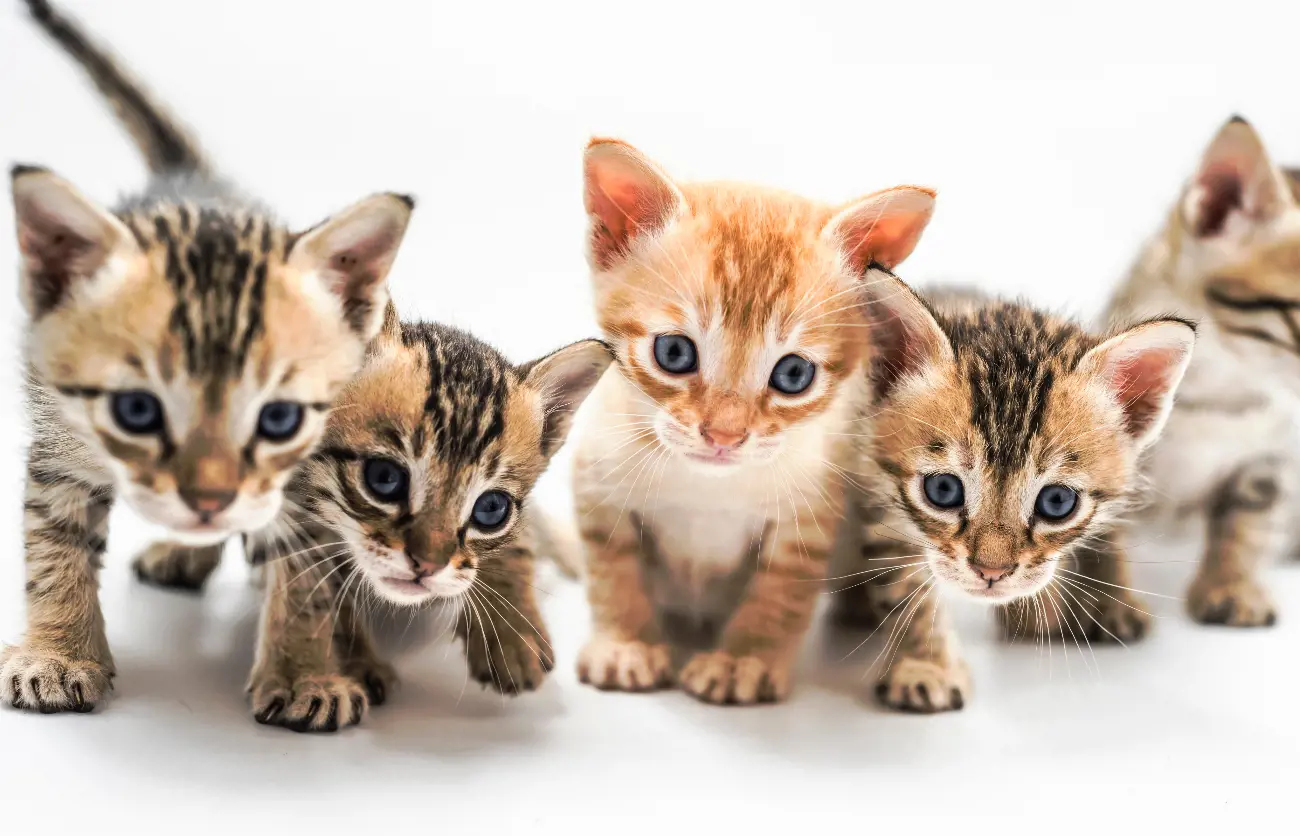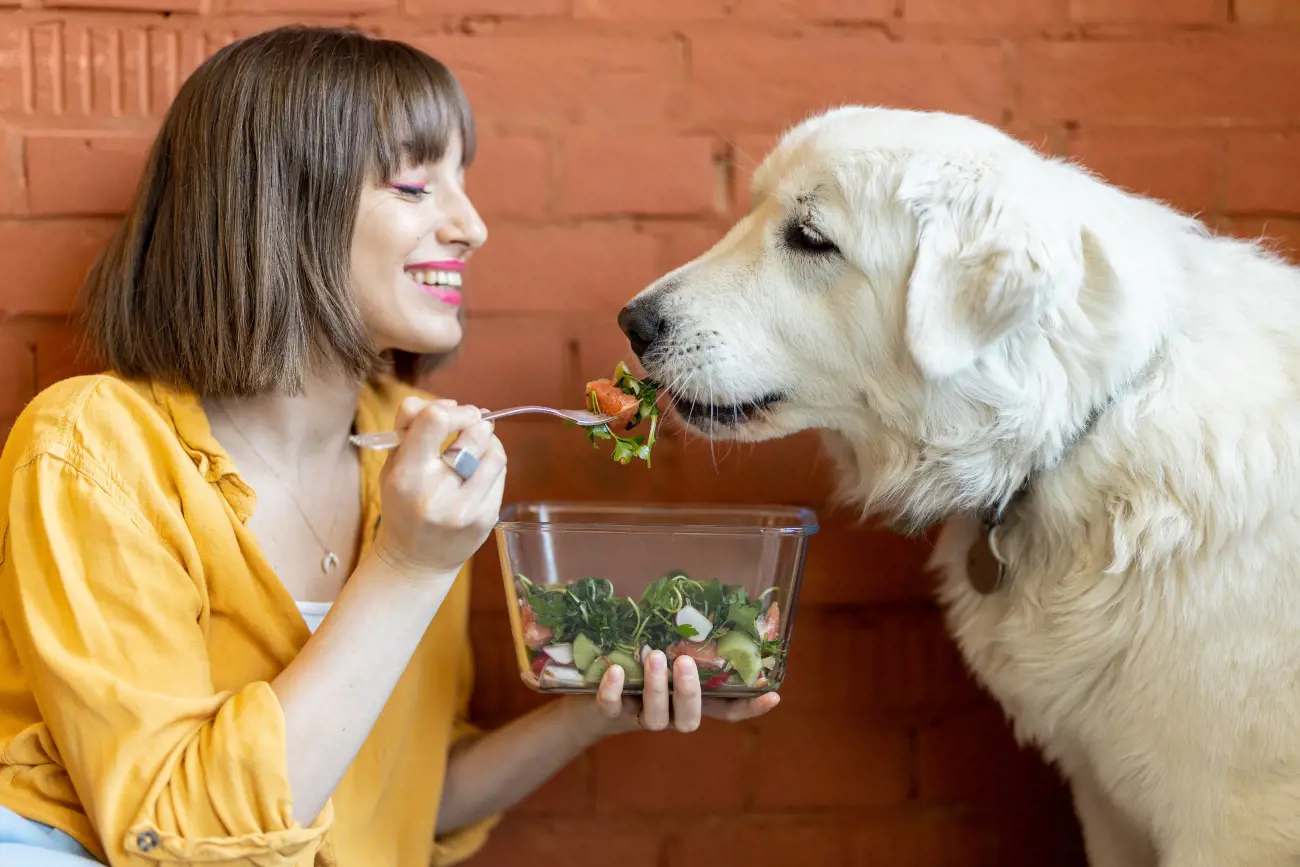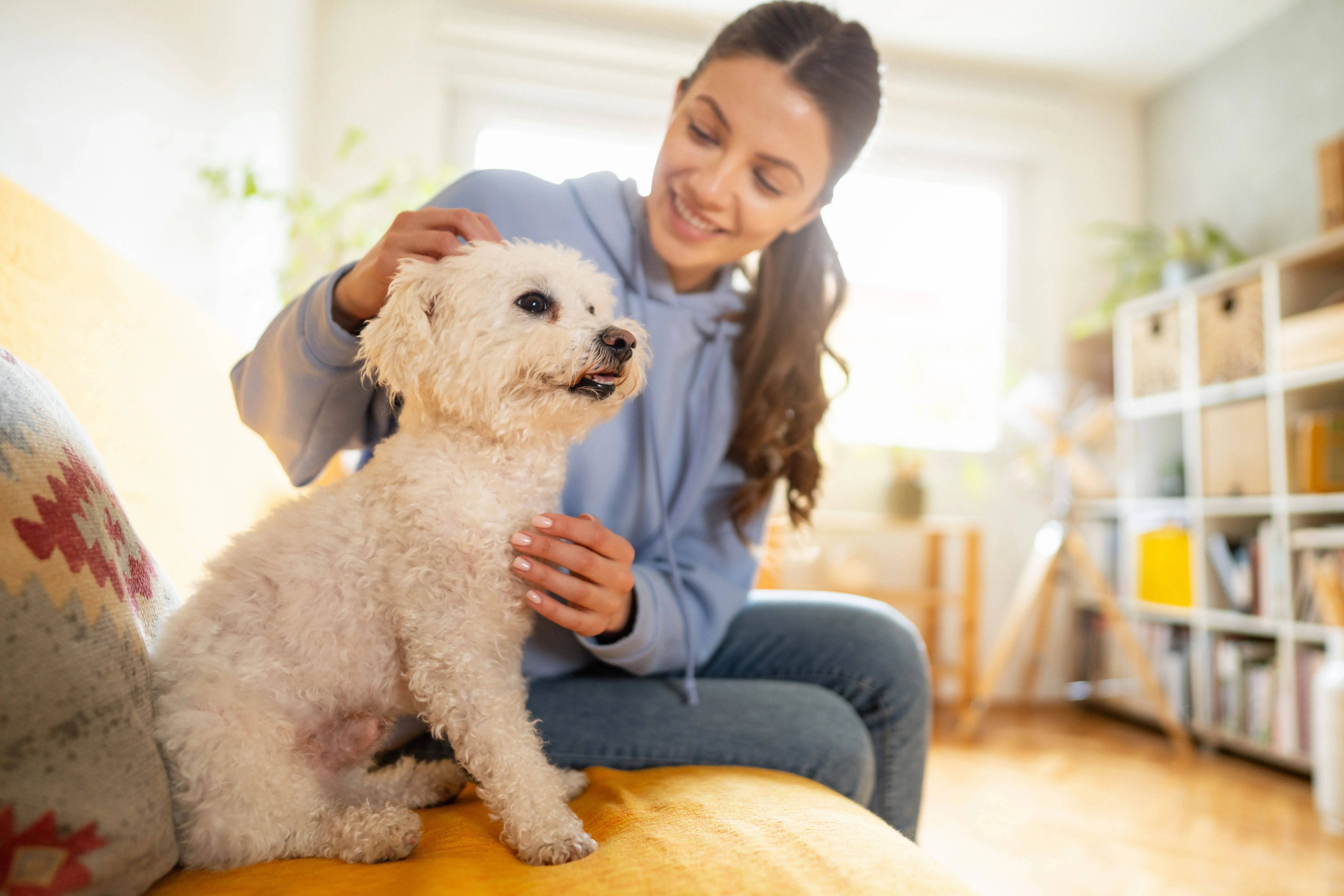Can dogs and rabbits live together?
6th September, 2021
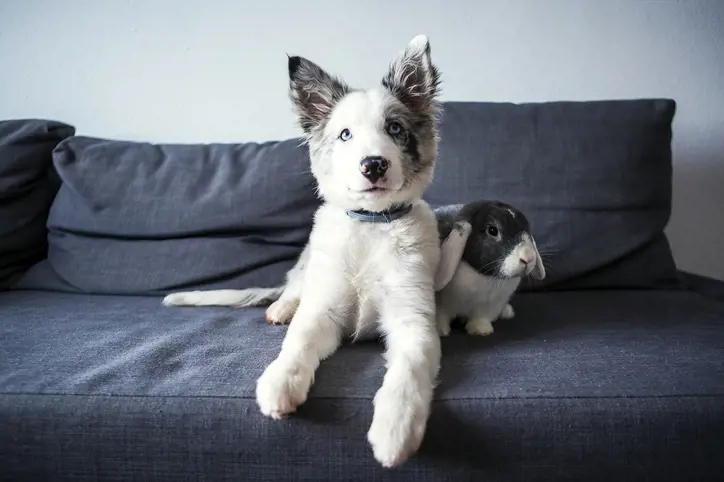
Everyone needs a friend – whether human or animal. And just like humans, different animals have different requirements when it comes to companionship. Take the relationship between dogs and rabbits as an example.
Dogs tend to enjoy interactions with humans as much as with other animals. Meanwhile, rabbits need the companionship of another rabbit for their physical and mental health. Of course, every animal is different. Some dogs are happy to live alone with their owners and some rabbits are especially nervous around people and other animals.
However, there is one golden rule to remember: if you own a pet and are thinking of getting another, your priority needs to be the welfare and safety of the animal(s) you already have. You should never get another pet that will cause your existing animal any stress or injury.
In this article we will look at how well dogs and rabbits can live together, how to choose the right pet, and offer some tips on how to introduce a rabbit to a dog (and vice versa). We’ll also remind you how pet insurance can help you cope with any expensive vet bills that might crop up.
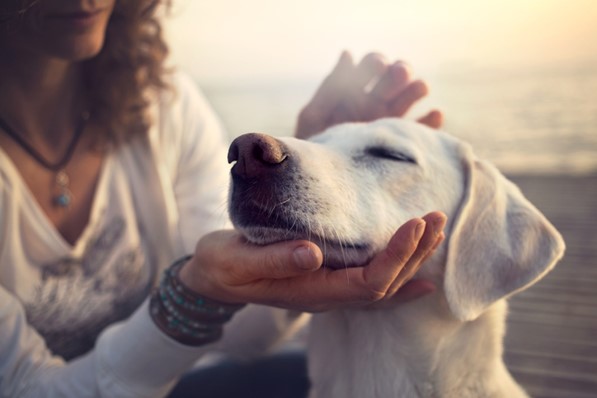
Can dogs and rabbits live in harmony?
So, can rabbits and dogs live happily alongside one another? Unfortunately, there is no clear answer. There are plenty of households in which the two animals cohabit peacefully. But there have also been terrible tales of rabbits being injured or even killed by the family dog. There are some situations in which having pet insurance simply isn’t enough, you need to be in tune with the animals themselves.
Rabbits can move quickly, and when an untrained dog with a high prey drive is close by its natural instinct could be to chase and attack. Even if it felt no compulsion to harm the rabbit before, being presented with a small, fleeing animal might prove too hard to resist.
Here are a few tips on how to keep all your pets safe and happy.
Choose the right breed
By researching and selecting the right animal breeds you are more likely to find a combination of animals that work well together.
Certain dog breeds are predisposed to hunting and so are best avoided. Just because a dog is great with kids, doesn’t mean it’s going to be good with rabbits as well.
Dogs to consider if you own a rabbit
Taking time to choose the right type of dog to live alongside your bunny is the best way to reduce the risk of injury. There are no guarantees, of course, but the lower the prey drive of a dog, the less chance they will want to chase a pet rabbit.
Some of the dog breeds unlikely to bother (or be bothered by) your rabbit include:
- Basset Hound
- Bernese Mountain Dog
- Bichon Frise
- Boxer
- Golden Retriever
- King Charles Spaniel
- Labrador
- Maltese
- Pug
Dogs to avoid if you own a rabbit
Dog breeds to avoid if you already own – or are thinking of getting – a rabbit include:
- Sled dogs: e.g. Siberian Husky, Alaskan Malamute
- Sighthounds: e.g. Greyhound, Whippet, Irish Wolfhound, Afghan Hound
- Scent hounds: e.g. Bloodhound, Beagle, Dachshund
- Terriers: e.g. Airedale, Jack Russell
- Guard dogs: e.g. German Shepherd, Doberman, Rottweiler, Great Dane
Any dog that sees small animals as prey is likely to want to chase a rabbit. That doesn’t mean it will necessarily be aggressive, but it could still cause the smaller animal severe stress and/or injury. Equally, your dog could get a nasty kick or bite especially from an adult bunny. Pet insurance will help cover the costs of any emergency treatment your pup might need.
Choose a dog-friendly rabbit
As with dogs, there are plenty of rabbit breeds to choose from. Choosing the right breed to be around dogs can be tricky – especially as every rabbit is an individual and may have a temperament that doesn’t connect with your four-legged friend.
Almost every rabbit will have a high survival instinct, but breeds that are good around dogs include:
- Californian
- Dutch
- Havana
- Himalayan
- Sussex
Smaller rabbits can be fairly nervous by nature, so might not be a great pairing with a dog. These include:
- Mini Lop
- Mini Rex
- Netherland Dwarf
How to introduce dogs and rabbits
First impressions count. So you want to take the right steps when introducing a dog to a rabbit – and vice versa.
Your main aim is to ensure the dog doesn’t become over-excited. The more excited a dog, the less able it is to control its impulses.
It’s easy to see how a vicious circle can form. The more excited a dog, the more likely a rabbit will run, the more stressed the rabbit becomes, making the dog even more excited. As a responsible pet owner, it’s up to you to make the right decisions. This includes everything from having suitable pet insurance to making sure your dog never has an opportunity to chase your pet rabbit and taking your time selecting breeds.
There are three areas you need to think about when helping rabbits and dogs to bond:
1 Focus the training on your dog: A rabbit will never be able to fight back against a dog. Even if they could, you’d never be able to train them in the same way you can train a dog. Your dog will listen to you. Your rabbit won’t.
2 Get an adult dog: Older dogs tend to have a calmer temperament. Puppies might be easier to train, but they can be more active and boisterous. If you already own a rabbit and are thinking about getting a dog, go for an adult pooch. There are plenty of pet insurance policies with no upper age limit, so the sky’s the limit. That’s not to say puppies can’t bond with rabbits, it’s just that the process may take a lot of time, effort and supervision.
3 Make sure your dog has prior training: Before you even consider introducing a dog to a rabbit, be sure the dog is well-socialised, and able to respond to (and obey) basic commands. These commands will be invaluable to the bonding process.
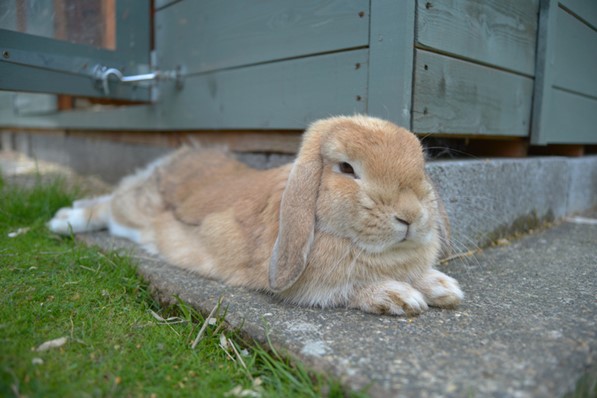
6 steps to introducing a dog and rabbit
There are six steps you can follow when introducing a dog and a rabbit.
1) Bring the rabbit into the room in a carrier so it feels safe and secure. Make sure the rabbit has somewhere it can hide within the carrier if it does start to feel stressed. If a rabbit becomes too scared, the consequences can be fatal.
2) Keep your dog on its lead so you remain 100% in control. Before a dog is introduced to a rabbit it must be properly trained. It must be able to sit and lie on command and leave a toy or food when asked. As well as keeping your beloved mutt on a lead, it is also a good idea to plan any introductory sessions when your dog is tired as it will be more likely to remain calm.
3) Ask the dog to sit, before gradually moving it closer to the rabbit carrier. Keep asking the dog to sit and give it a treat as a reward for calm behaviour. If the dog shows any signs of excitement (e.g. barking, lunging, staring, tensing or whining) you should immediately lead it out of the room.
4) When you and your dog are close enough to the rabbit, let it sniff the carrier. Once he or she has investigated it, ask them to sit or lie on their side.
5) If you are confident that both animals are calm and not showing any signs of stress (the rabbit) or excitement (the dog), slowly open the door of the carrier and let the rabbit come out if it wants to. At this stage it is really important to take cues from your animals. If the rabbit is looking nervous or unsure of leaving the carrier, you must not force it to come out. Let the rabbit do things at its own pace. This might take some time, so be patient!
6) When the rabbit does come out of its carrier, it’s important that your dog is looking at you rather than the rabbit. If it’s looking at the rabbit or makes an attempt to approach the rabbit without your permission, you need to put him into the sit/stay position immediately. Let the rabbit investigate its canine companion, and if the dog tries to approach the rabbit again, lead the dog out of the room. If your dog does what he or she is told, be sure to praise them.
Keep these initial introductory sessions to around five minutes a time. Repeat these steps every day to get the animals used to being around one another and never leave the dog alone with the rabbit during these sessions.
Once you are happy that your dog and rabbit are getting used to one another, it’s a good idea to introduce them within another environment. Letting your animals bond in different surroundings can help a bond develop more quickly.
Tips on keeping rabbits and dogs together (and safe)
It’s virtually impossible to know for sure whether a dog and rabbit pairing is going to be a good or a bad match. However, there are a number of tips to help you make an informed decision.
1) Weigh up their personalities
Just like humans, animals have individual personalities. Just because you’ve picked breeds that will enjoy one another’s company on paper, doesn’t mean your dog and rabbit will get on in real life. Some dogs are just too highly-strung to be around rabbits, while some bunnies are too anxious to be around dogs. Understanding an individual animal’s temperament can reveal a lot about a potential pairing.
2) Make sure hormones aren’t an issue
Both the dog and the rabbit must be neutered or spayed if they are going to have any chance of getting along. Hormonal rabbits are likely to want to hump the family dog, while hormonal dogs have a higher prey drive and are more likely to chase a rabbit. Speak to your vet about your options.
3) Be patient with the introductions
As discussed above, introducing rabbits and dogs can take time. Be absolutely sure that the dog shows little or no interest in the rabbit before you make a decision. It’s also worth noting that some dogs can be scared of rabbits, so make sure there is mutual respect.
4) Don’t make a decision based on looks alone
As the saying goes, never judge a book by its cover. And never judge a dog by its size. The size of a dog has no bearing on how well it will get on with a rabbit. You’ll often find that large dogs can be great big softies, while their smaller counterparts can be more aggro than you’d imagine.
And once again, no matter how well you think you know your dog and/or rabbit, never be tempted to leave them alone in a room together.
How to tell if your dog and rabbit have bonded
Your rabbit and dog will have bonded once they feel at ease with one another. How this will look will be different from one pair to the next. For some pets, their ‘bonding’ will come across as indifference to one another. While others may feel so comfortable in each other’s company, they choose to sleep snuggled up with one another.
Of course, whether your pets choose to cuddle up is beside the point. What matters is that both animals respect one another’s boundaries and remain calm when in each other’s company.
In terms of obvious signals that your pets have bonded, there are two key elements to look out for:
-
- Your dog remains calm and submissive when your rabbit is around
-
- Your rabbit never flees when it catches sight of your dog
Purely Pets: Happy pets, happy owners
At Purely Pets, we’re always on hand to help pet owners make the right choices about their animals. We’re all about simplicity, transparency and flexibility.
Our team of experts can help you find pet insurance to suit you and your pet’s needs, offering a range of lifetime policies, a 24-Hour Vet Helpline and an online policy management portal.
Get a quick quote for pet insurance.
Policy benefits, features and discounts offered may very between insurance schemes or cover selected and are subject to underwriting criteria. Information contained within this article is accurate at the time of publishing but may be subject to change.
Helpful Pages
Recent Posts
Pet Insurance Quote
- 98% claims paid *
- Claims paid directly to vets
- 24/7 vet video consultations
- Interest free monthly payments
